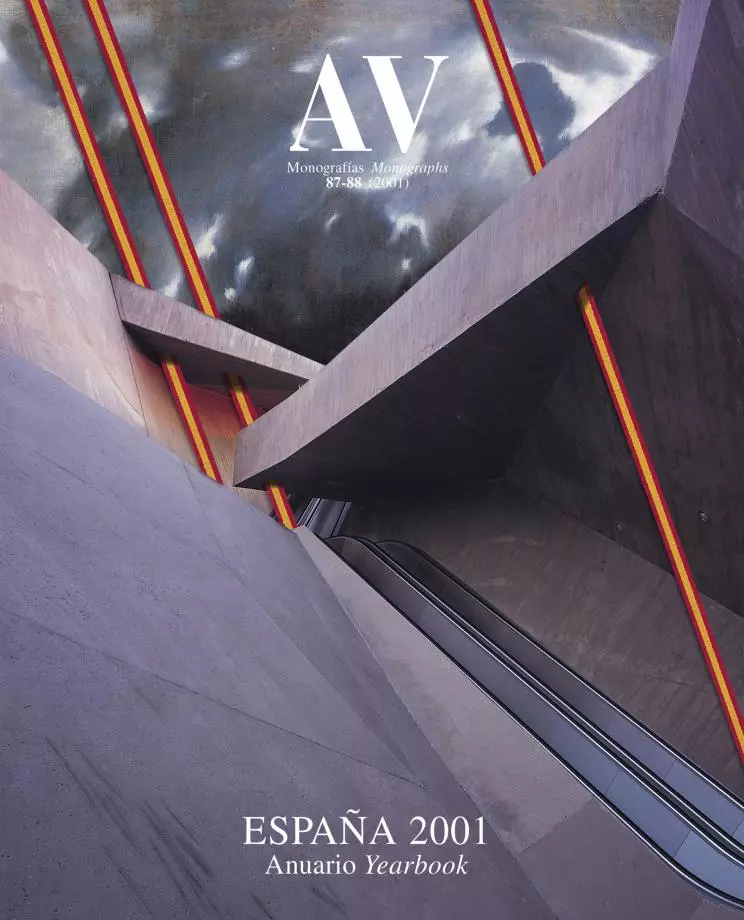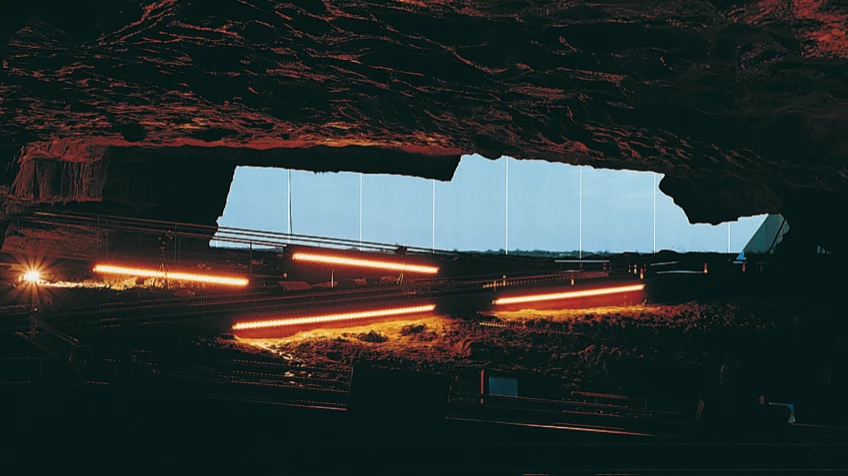
Mea culpa d’un sceptique: such was the title of the article Émile Cartailhac published in 1902 to establish the authenticity of the paintings in the Altamira cave, dismissed as forgeries by experts since their discovery by Marcelino Sanz de Sautuola twenty-three years before. A similar mea culpa ought to be enunciated by us skeptics who like to take on an ironic reticence when presented with facsimiles, which we dismiss as cultural shams. The replica of Altamira, built beside the original cave, is so meticulously exact, is part of such a well-balanced and pertinent research and pedagogical project, and is inserted in a building of such architectural elegance and happy rapport with the landscape, that it will not fail to perforate the caustic armor plating of those who go to Santillana del Mar expecting to find there only a theme park at the service of the tourist industry.
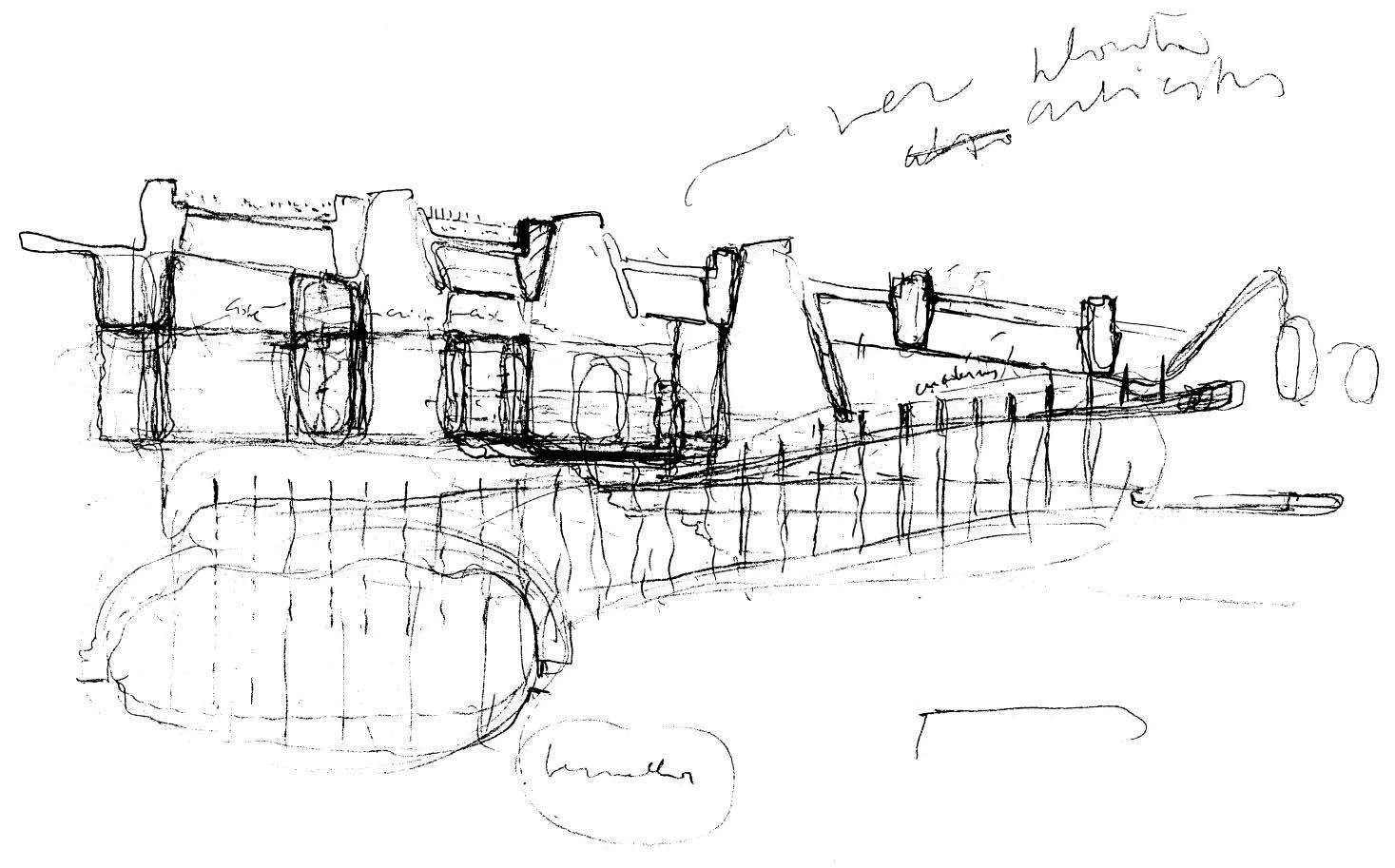
The replica of the Altamira cave is part of a museum project that brings together education and emotion, and this goal is made evident in the sight – from the research area and hanging from a net of wires – of the facsimile’s rough extrados.
The history of Altamira is of course sprinkled with suspicions. Early on, in the polemic immediately following the now legendary “Daddy, oxen!” of Don Marcelino’s eight-year-old daughter, the astonishing perfection of the polychrome bisons came into conflict with the evolutionist convictions of pre-historians – who assigned a naïve, childish art style to primitive humanity – and everyone from the members of the Institución Libre de Enseñanza to the great French specialists of the day refused to accept the paleolithic dating of the paintings. Only subsequent findings of cave art in France gave legitimacy to Altamira, with Cartailhac’s mea culpa and the monograph he dedicated to it in 1906 hand in hand with the abbot Breuil, the illustrious prehistorian who would become the top authority of paleolithic art. But scientific respectability would not guarantee the protection of what was soon called the “Sistine Chapel of quarternary art.” The dawn of the 20th century saw the start of a hardly edifying trajectory that combined exemplary personal initiatives with frequent institutional negligence. This process, which had its most ominous moment in 1936, during the Spanish Civil War, when the cave was seized for use as antiaircraft shelter, militia barracks and ammunition storage (and apparently spared bombardment only by the express order of General Kindelán to the Condor Legion), brought on a progressive deterioration, accentuated by the multiplication of visitors that was the result of its touristic exploitation from the fifties to its eventual closing to the public in 1977.

It was reopened in 1982 for a very limited number of visitors so as not to endanger environmental conditions inside, and the possibility of a replica that would allow mass visits began to be discussed. This is the origin of the project now being wrapped up: a museum and research center built around the facsimile. Maybe because of the poor quality of the existing reproduction in Madrid’s Archaeological Museum, possibly also because the replica carried out in Japan in 1993 is situated in a theme park, surely because we tend to think of facsimiles as falsifications of memory and trivializations of experience, the initiative was not unanimously applauded. In the newspaper El País I myself mentioned the Japanese copy with satirical overtones, and in the same journal, the writer Vicente Molina Foix referred to the Altamira project as a cave Disneyland that would provide “cultural deception” through a didactic sham. But at least for me, the materialized project has dissolved initial suspicions, and I am willing to offer a mea culpa, in which other previously reticent voices may wish to join me.
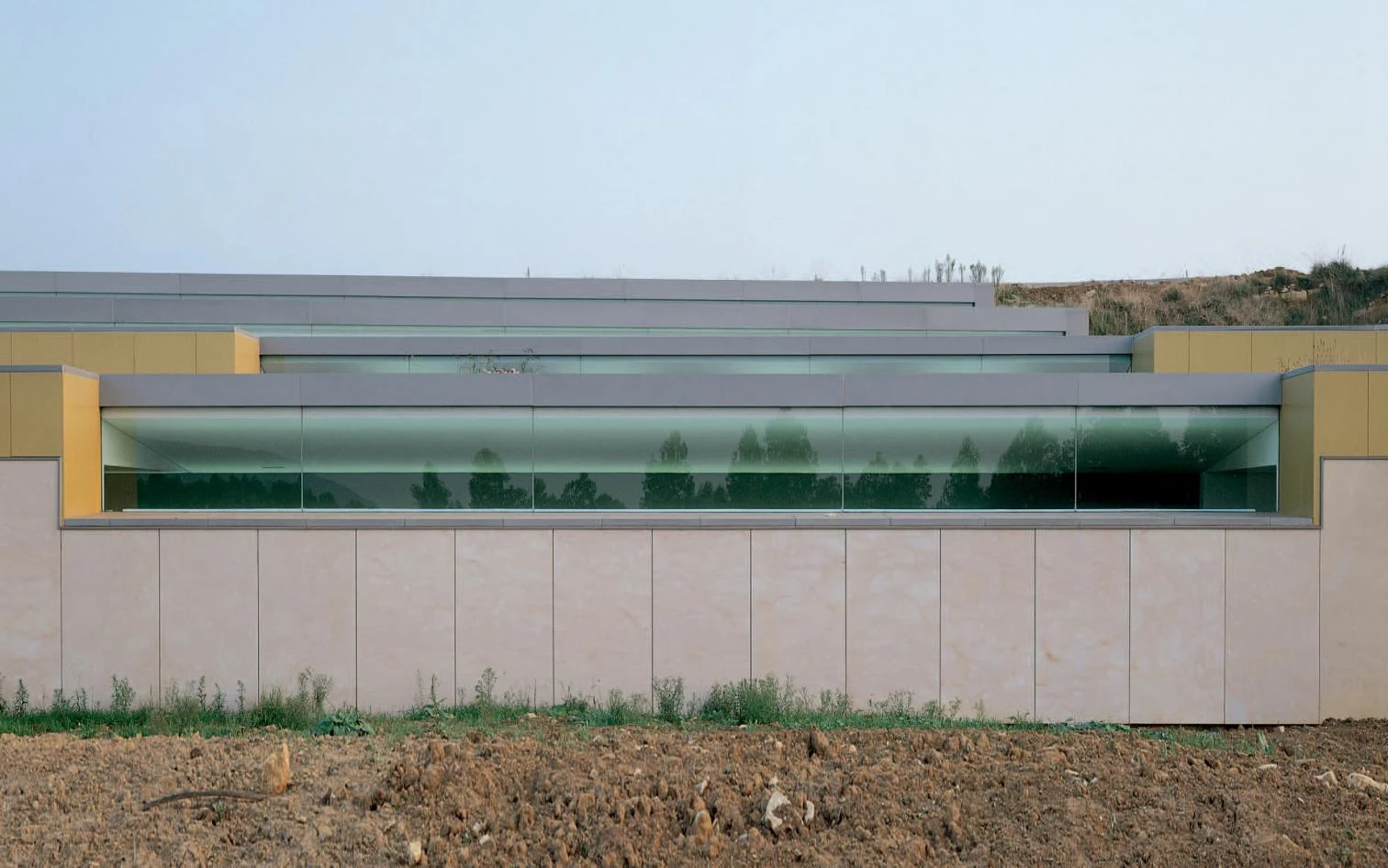
In this praise of the facsimile, hence, there is no irony intented, just a genuine appreciation of the museum project drawn up by José Antonio Lasheras and the architectural project executed by Juan Navarro Baldeweg, because they reconcile pedagogy and emotion in an exemplary building. One that supports the extraordinary artifice their authors call the ‘neo-cave’ and is able as well to accommodate the usual exhibition and research program of an archaeological museum, strengthened in this case by the exceptional provision of parking and reception space for the important flow of visitors expected. Half-buried in a hill so as not to interfere with the natural scenery – which at the mouth of the neo-cave will be reinforced by the planting of the same trees that would have surrounded the paleolithic painter 14,000 years ago – the building makes extensive use of toplighting through longitudinal skylights that cut through the landscaped roofs, prolonging themselves in the interior through sculptural visors which emphasize their linearity with mannerist efficacy. Together with the slight stepping of the ground and the small shifts of the built volumes, the petrous claddings and mustard-colored aluminum panels make for a smooth implantation on the site, something the building does with a natural ease that effectively contrasts with the scenographic and lyrical intensity of the rooms lit by the slanted planes of the top visors, which give the interior space the immaterial and abstract clarity of its diffused brightness.

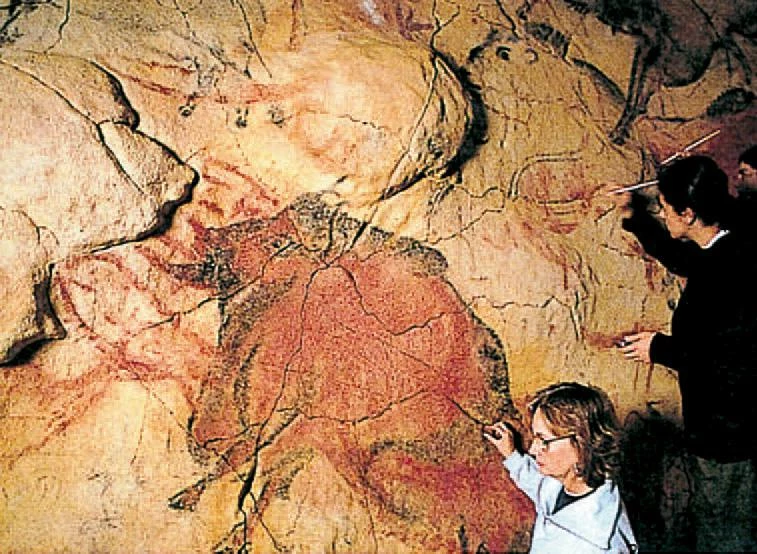
The replica of the cave shows the state of the original cave at the time when the paintings were carried out, before landslides blocked its mouth and leaving out the later interventions for its reinforcement.
Accustomed as we are to the sinister darkness of so many visitable caves, we often forget that our ancestors, in their everyday lives, occupied only the luminous mouth of the cavern. Such is the case at Altamira, whose prehistoric inhabitants really only used the area of the vestibule. This and the chamber containing the polychrome paintings are what the replica reproduces. As a matter of fact, the facsimile shows what the shape of the cave would have been at the time the paintings were carried out, before natural landslides blocked the mouth. The result is a luminous interior that is hard to imagine in the original cave as it is today. The reproduction also omits the calkings, props and reinforcements that in the course of the century have had to be undertaken in order to consolidate the real cave, and which make it labyrinthian. In this way the copy is the restoration that the original does not allow, and therefore, paradoxically, a representation that, to exaggerate, can be described as more real than the real thing. With his usual mastery in things luminous, Juan Navarro Baldeweg has successfully hit upon the subterranean brightness of Altamira, repeated in the diaphanous and tranquil interiors of the museum, with a mute glow that is more conducive to knowledge, reflection and pleasure than the deafening sheen of limelight.
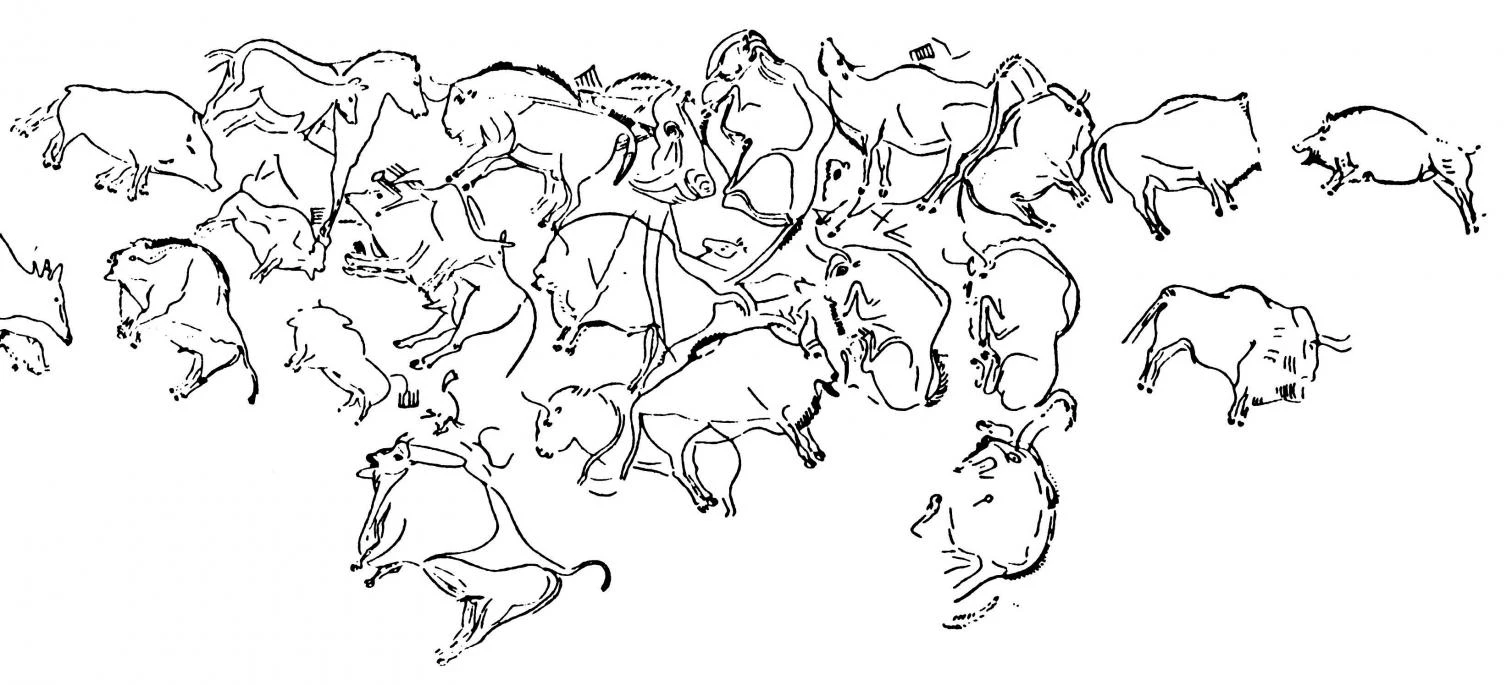
But perhaps the most evocative episode of the work is that where fiction, art and nature braid together with greater deliberation: the extrados of the neo-cave, which offers its wrinkled back of light aerolite to the gaze of researchers, suspends the reverse of the pedagogical scheme of an army of disciplined threads that reconcile the exigent rigor of physical laws with the abrupt randomness of geological events, manifesting science’s arduous inclination for exactitude right where many would only see the drop curtains of a capricious spectacle. The architect wanted to make the visitor to the facsimile participate in this gaze, but the museum’s management chose to maintain the innocent route that is implied in fiction’s “suspension of disbelief.” Luigi Luca Cavalli-Sforza asserts that the great artist who painted the bisons of Altamira spoke Basque, and this intersection between genetics, archaeology and linguistics throws an archaic light on the perception of today’s stormy Basque scene. When confronted with the overwhelming emotional and intellectual experience of the polychrome vault, it is hard not to feel a flash of admiration for the brilliant paleolithic author who spans the abyss of millennia between our gazes; and it is impossible not to know that our shared human condition traces an arc of fraternity and empathy over the blurred identities of peoples and languages.


